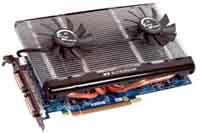 by congo » Wed Mar 02, 2005 5:33 am
by congo » Wed Mar 02, 2005 5:33 am
When you get your new drive, it may well be a faster device than your 40 gb drive. If the new drive is faster, then it would be wise to use that as your primary drive.
Partitioning is simply dividing your drive into smaller parts, not much different to creating large folders, except that the operating system sees hard drive partitions as seperate physical devices and treats them as seperate hard disks.
From a security standpoint, partitioning can be very useful if the virus/threat attacks C: drive, ignoring your files on other drives.
From a management point of view, partitioning is useful because the smaller sections are quicker to work on individually. Large or single partitions take a long time to copy/format/check etc.
Free partioning software is available from many sources including the drive manufacturers websites.
The windows XP setup disc is as good as any partioning tool, and if you read the setup options very slowly and carefully, you can't really go wrong, if you do, just start again.
My advice when you get the new drive..............
Disconnect your current drive, leaving it in position.
Hook up the new drive in MASTER configuration on IDE "0" preferably.
Set your BIOS options to "BOOT FROM CDROM" first, then Boot from HDD 0
Last edited by
congo on Wed Mar 02, 2005 5:35 am, edited 1 time in total.

Mainboard: Asus P5K-Premium, CPU=Intel E6850 @ x8x450fsb 3.6ghz, RAM: 4gb PC8500 Team Dark, Video: NV8800GT, HDD: 2x1Tb Samsung F3 RAID-0 + 1Tb F3, PSU: Antec 550 Basiq, OS: Win7x64, Display: 24&



 Mainboard: Asus P5K-Premium, CPU=Intel E6850 @ x8x450fsb 3.6ghz, RAM: 4gb PC8500 Team Dark, Video: NV8800GT, HDD: 2x1Tb Samsung F3 RAID-0 + 1Tb F3, PSU: Antec 550 Basiq, OS: Win7x64, Display: 24&
Mainboard: Asus P5K-Premium, CPU=Intel E6850 @ x8x450fsb 3.6ghz, RAM: 4gb PC8500 Team Dark, Video: NV8800GT, HDD: 2x1Tb Samsung F3 RAID-0 + 1Tb F3, PSU: Antec 550 Basiq, OS: Win7x64, Display: 24&


